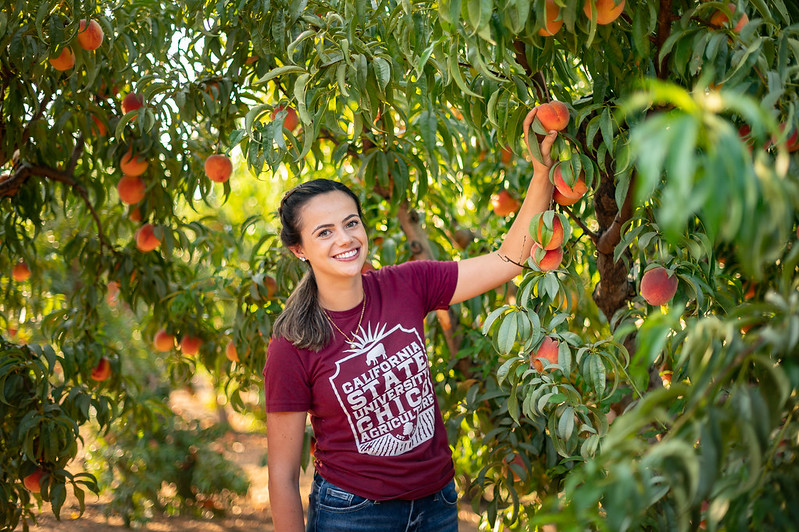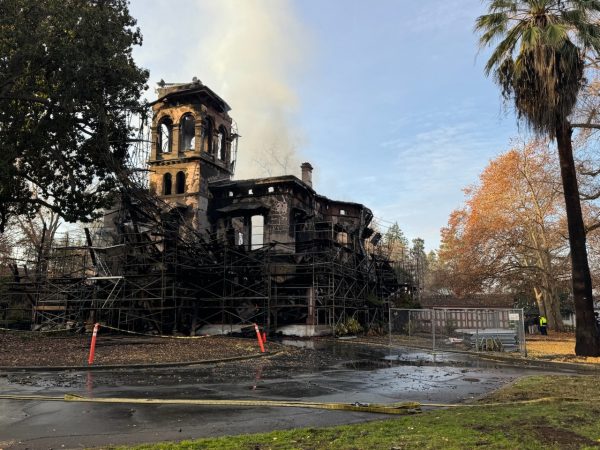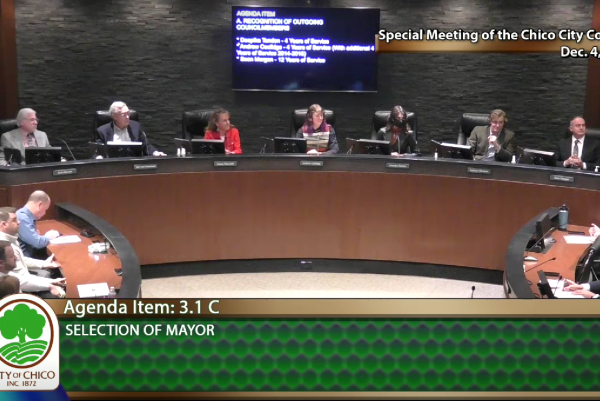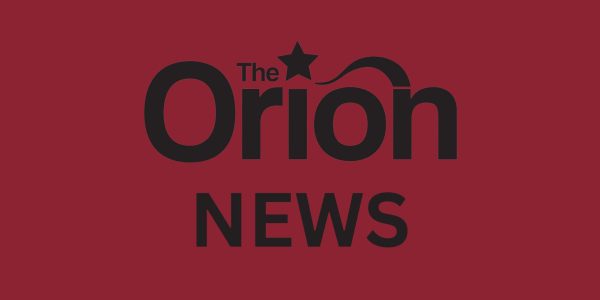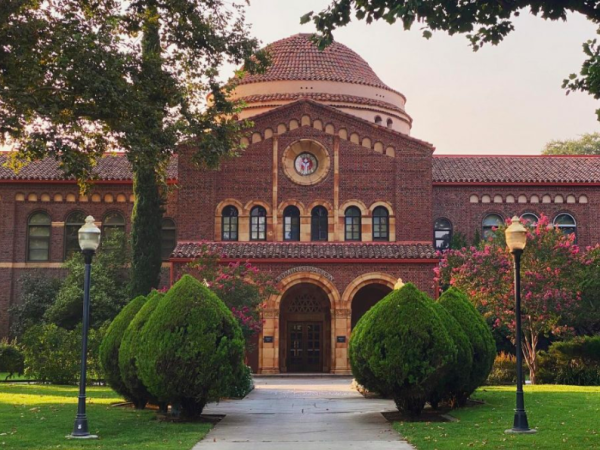New AG communication and leadership option sees first grads, looks to expand
Michelle Borges, the first student in the agricultural communications and leadership program. Photographed by Jason Halley.
Michelle Borges committed to Chico State knowing she wanted to study agricultural communications and leadership. The problem? Chico State didn’t have the program she wanted.
The solution? Borges spent her first two years at Chico helping to shape the College of Agriculture’s Communication and Leadership option, which was launched in fall 2021.
This spring, Borges will be among the program’s first graduates and is looking forward to a career in public relations, social media, graphic design or marketing in the agricultural industry, Borges said.
With only 10 students currently enrolled, the agricultural sciences communication and leadership option is the smallest program option offered in the College of Agriculture at Chico State.
While the program is still new, it is expected to take off as the curriculum revolves around meeting the growing demand in the agricultural industry for communications and leadership personnel.
Students’ interest in this program is what drove Dr. Michael Spiess to begin the task of creating potential curriculum plans alongside Dr. Susan Wiesinger in 2014. The goal was to create an interdisciplinary program that drew from existing strengths in both the College of Agriculture and the College of Communication and Education. Spiess retired during the process, but was the key to the program’s inception at Chico State. Dr. Mollie Aschenbrener ultimately facilitated the establishment of the major through the campus approval process.
Demand for agricultural communication and leadership is growing nationally, Spiess said. This is one of the reasons he and Wiesinger pushed for the addition of this program to the College of Agriculture.
The communication and leadership program option at the university is modeled after agricultural communication majors at California Polytechnic State University, San Luis Obispo, and Purdue University. Spiess and Wiesinger used a blend of these programs’ curriculum to create the foundation of the new program.
Dr. Patrick Doyle, 2019-20 Dean for the College of Agriculture, said the program gained momentum in 2020, as the college recognized the need for skilled liaisons between the agricultural community and the public who could properly communicate agriculture’s story.
The partnership with the College of Communication and Education has been essential in developing a curriculum that prepares students for their futures in public relations, marketing, journalism and communications in agriculture-based careers.
“We wouldn’t be able to do it without the College of Communication and Education,” Doyle said.
As communication styles have evolved from legacy media to digital media, social media has become an increasingly important means of communication, Doyle said. Students are learning the importance of a variety of social media platforms as a means of communication through the curriculum.
Typically, students of a specific college study within their program’s realm for the majority of their courses. However, the communication and leadership option allows the College of Agriculture and the College of Communication and Education to provide students a well-rounded education in both disciplines.
Students take foundational agriculture classes including: mechanics, animal feeds and nutrition, plant science, soil science, farm accounting and more. These classes overlap with journalism and communications courses such as: digital literacy and media technology, writing for mass media, survey of public relations and more.
The unique curriculum grants students the opportunity to take a wide range of courses that agriculture students otherwise would not have the option of studying.
As the first student in the major, Borges has been able to provide valuable feedback on courses that are part of the curriculum and has helped build the outreach program.
JOUR 351, “Public Relations Publications,” a journalism course taught by Debra Johnson, was Borges’ favorite. The course uses Adobe Suite and other programs to create flyers, advertisements and more, Borges said. The course challenged her, but her skills improved substantially and she believes this will help in her future career.
Borges developed a social media presence for the new agricultural communication and leadership program by creating and sharing videos which helped spread the word and gain traction for enrollment.
Now in her last semester at Chico State, Borges feels confident her studies have prepared her for the workforce.
The relationship between the communications and leadership program and the College of Communication and Education is symbiotic as it adds new perspectives and conversations across the disciplines, Borges said.
The Student Success and Retention Office for the college of agriculture has been the bridge connecting students to advisors, ensuring no one is left behind in the development of the new program.
The office uses drop, fail and withdrawal data to show which classes are creating a bottleneck for students, said Denise Crosswhite, Advisor and Retention Specialist.
The resources for students in the college of agriculture include academic advising, peer advising, workshops and career center outreach ensuring all students have the tools they need to succeed, Crosswhite said.
Prospective students of the new program option can find information at college-wide events, the College of Agriculture’s social media, program brochures or word of mouth from current students or faculty. Currently, the College of Agriculture is allocating resources elsewhere and is not actively engaged in outreach to prospective students in other ways.
As the agricultural communications and leadership program continues to grow, community outreach opportunities have emerged.
Next semester, the Tehama Group Communications, Chico State’s student-managed public relations agency, will be working alongside Nichole Johansson for a project related to the Honeybee Discovery Center in Orland, California.
Not only does this count as an elective for agricultural communications and leadership students, but it also serves as a great opportunity to work with community members and build a professional network.
Borges plans on continuing to expand the pathway for agricultural communication students as she obtains her master’s degree at Oregon State University. Here, she will be working alongside the College of Agricultural Sciences to further develop their agricultural communications master’s program.
“A trailblazer but also a guinea pig,” Borges said.
Natalie Ernandes can be reached at [email protected] or [email protected].



